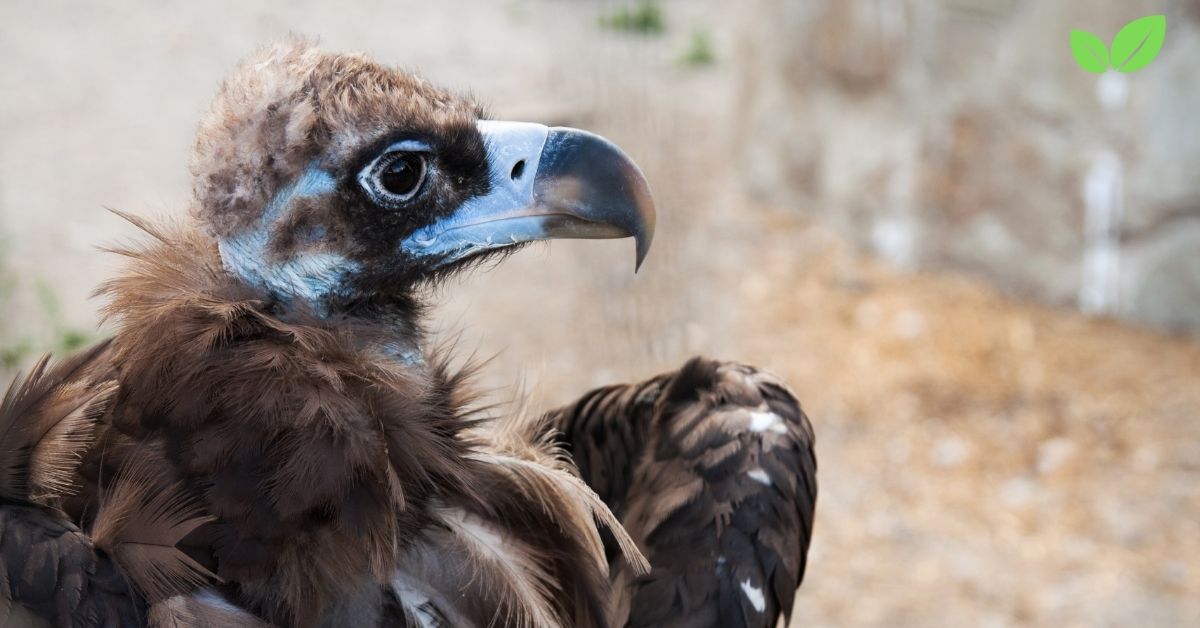The monk vulture, also known as the Cinereous vulture (Aegypius monachus), is one of the largest birds of prey in the world and plays a crucial role in maintaining the balance of ecosystems. Found primarily across Europe and Asia, this majestic scavenger holds a unique position in the food chain, contributing to the health of ecosystems by consuming carrion. Its environmental niche is defined by its feeding habits, habitat preferences, and interactions with other species within its range.
This article explores the environmental niche of the monk vulture, detailing its ecological role, habitat requirements, feeding behavior, conservation status, and interactions with the human environment.
Introduction to the Monk Vulture
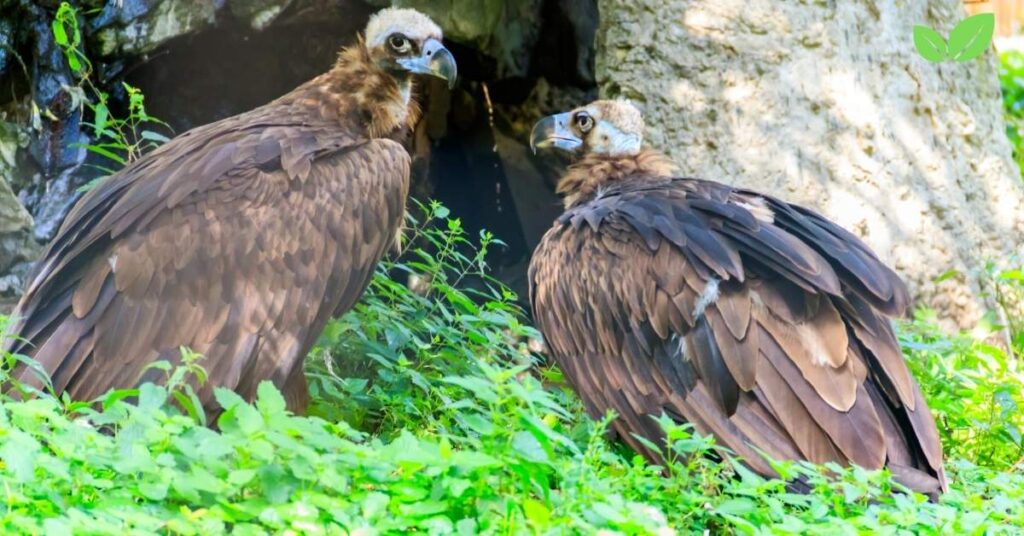
The monk vulture, also referred to as the black vulture, is the sole member of the genus Aegypius within the family Accipitridae, which includes other birds of prey such as eagles, hawks, and kites. With a wingspan reaching nearly 3 meters (10 feet) and weighing up to 14 kilograms (30 pounds), the monk vulture is one of the largest flying birds in the world. Its dark plumage, broad wings, and distinctive bare, dark gray head and neck make it a striking figure in the skies.
Despite its formidable size and imposing appearance, the monk vulture is a specialized scavenger, feeding almost exclusively on carrion (the remains of dead animals). Its name, “monk vulture,” is derived from the bird’s dark, hooded appearance, which resembles the cowl of a monk. This vulture’s role as a scavenger makes it an essential part of many ecosystems, as it helps prevent the spread of disease by consuming dead animals and recycling nutrients back into the environment.
Geographic Range and Habitat of the Monk Vulture
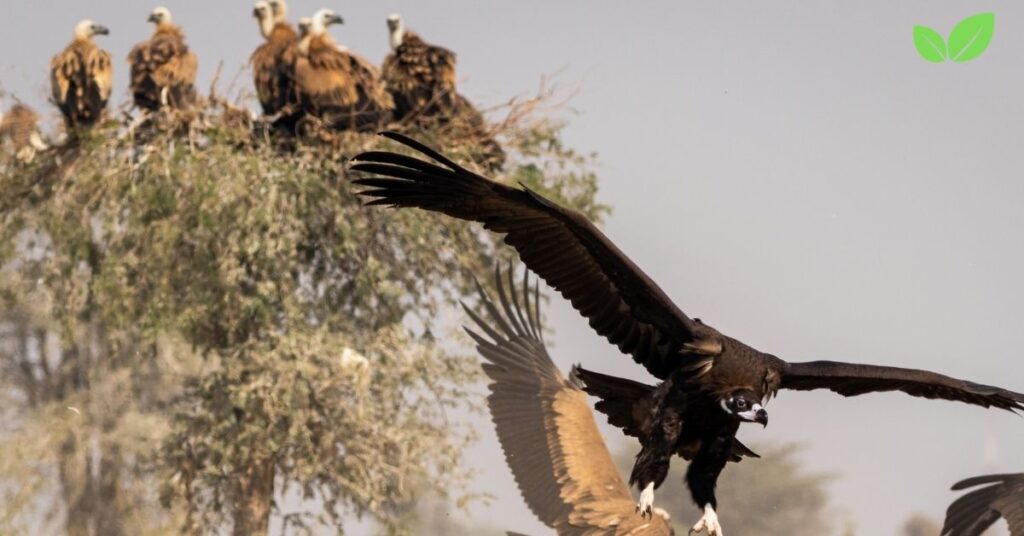
Global Distribution
The monk vulture is native to a wide range across Europe and Asia, primarily inhabiting regions of Spain, Turkey, Russia, Central Asia, and parts of China and Mongolia. In Europe, the species has established a significant population in Spain, which is one of its primary strongholds due to extensive conservation efforts.
In Asia, monk vultures are commonly found in mountainous regions, including the Himalayas and the Mongolian steppe. These birds have adapted to a variety of habitats, ranging from forested areas to open grasslands and arid environments.
Habitat Preferences
Monk vultures prefer large, open landscapes where they can efficiently survey their surroundings for food. They are often found in mountainous or hilly regions, where their wide wings allow them to soar effortlessly on thermal updrafts while searching for carrion. In many cases, monk vultures also inhabit forested areas, using tall trees or cliffs for nesting sites.
In Mediterranean regions, monk vultures often inhabit mixed forests and scrublands, while in Asia, they are more commonly found in mountainous steppe environments. These habitats provide not only a source of food but also secluded areas for nesting and raising young.
The availability of large, undisturbed habitats is critical for the monk vulture, as these birds require expansive territories for foraging. Given their specialized diet and nesting requirements, monk vultures are often highly sensitive to habitat degradation and human disturbance.
Feeding Behavior and Ecological Role
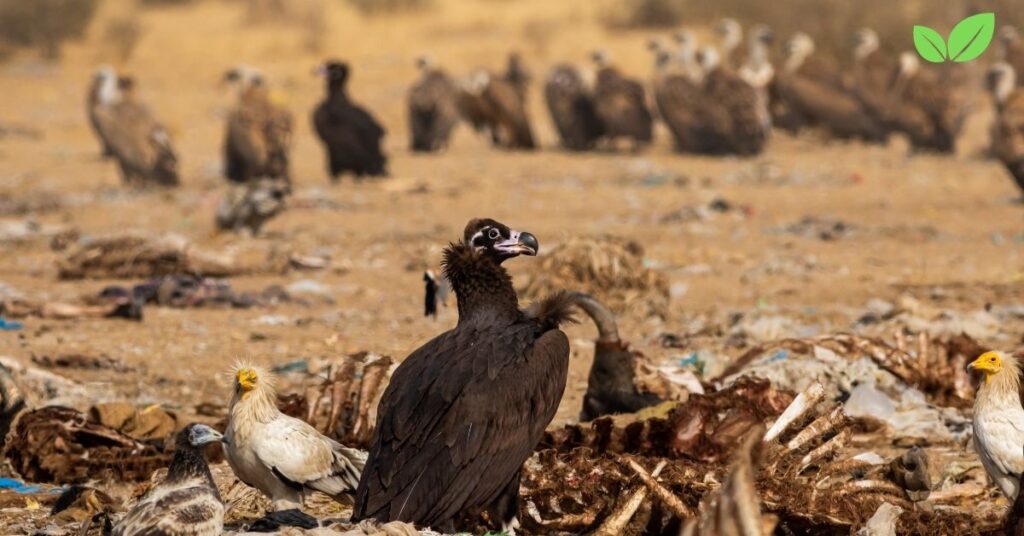
Scavenging and Carrion Consumption
Monk vultures are obligate scavengers, meaning that they rely almost entirely on dead animals for their food. This scavenging behavior is essential for the health of ecosystems, as it helps to prevent the spread of diseases that can arise from decaying carcasses. By consuming carrion, monk vultures break down and recycle organic matter, contributing to nutrient cycling in ecosystems.
The monk vulture’s strong beak is well-adapted to tearing into tough hides and tissues, allowing it to feed on large carcasses that other scavengers might struggle to access. While monk vultures primarily feed on the remains of large herbivores such as deer, cattle, and sheep, they are also capable of consuming smaller mammals when available.
Hierarchical Feeding with Other Scavengers
In many ecosystems, monk vultures coexist with other scavenger species, including griffon vultures, eagles, and other raptors. These species often engage in hierarchical feeding, with larger, more dominant species like the monk vulture typically feeding first on a carcass. Smaller scavengers, including other vulture species, often wait until the monk vulture has finished before moving in to feed on the remains.
This hierarchical feeding system ensures that the largest and most dominant scavengers, like the monk vulture, can take advantage of the most nutritious parts of the carcass, while smaller scavengers are left with the remnants. Despite this competition, the presence of multiple scavenger species helps ensure that carrion is fully consumed, reducing the risk of disease transmission and decomposition-related problems in ecosystems.
Nutrient Recycling and Ecosystem Health
The monk vulture’s role as a scavenger makes it a vital component of many ecosystems, particularly in preventing the spread of disease. Dead animals, if left to decay, can harbor pathogens that can spread to other wildlife, livestock, and even humans. By consuming these carcasses, monk vultures help to reduce the risk of disease outbreaks, acting as a natural sanitation service.
Moreover, by breaking down carcasses, monk vultures return valuable nutrients to the soil. These nutrients, which would otherwise remain locked in decaying animal matter, are essential for plant growth and soil fertility. In this way, monk vultures play a key role in maintaining the overall health and balance of ecosystems.
Nesting and Reproductive Behavior
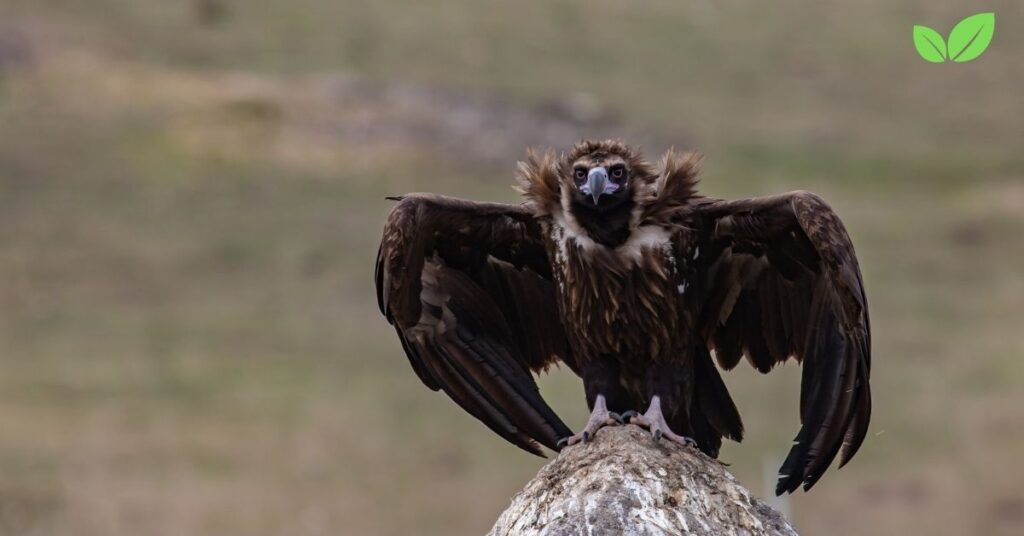
Nesting Sites
Monk vultures build large, bulky nests in trees or on cliffs, often choosing secluded locations far from human activity. In forested regions, they typically nest in the tops of tall trees, while in more arid or mountainous regions, they prefer cliff ledges. These nesting sites provide safety from predators and a good vantage point for monitoring the surrounding landscape.
Monk vulture nests are made from sticks and other plant material, with the interior lined with softer materials such as wool or grass. These nests are often reused year after year, with the vultures adding new materials each season to maintain and repair the structure.
Breeding and Lifespan
Monk vultures are long-lived birds, with a lifespan of up to 40 years in the wild. They are slow to reproduce, typically laying only one egg per breeding season. Both parents share the responsibilities of incubating the egg, which takes about 50 to 55 days to hatch.
After hatching, the chick remains in the nest for several months, relying on its parents for food and protection. Monk vultures are devoted parents, feeding their chicks by regurgitating partially digested food. The young bird fledges after 3 to 4 months but may continue to rely on its parents for food and protection for several more months before becoming fully independent.
The slow reproductive rate of the vulture, combined with its long lifespan, makes it particularly vulnerable to population declines. If adult vultures are killed or injured, it can take many years for the population to recover, which has significant implications for the species’ conservation.
Threats to Monk Vultures
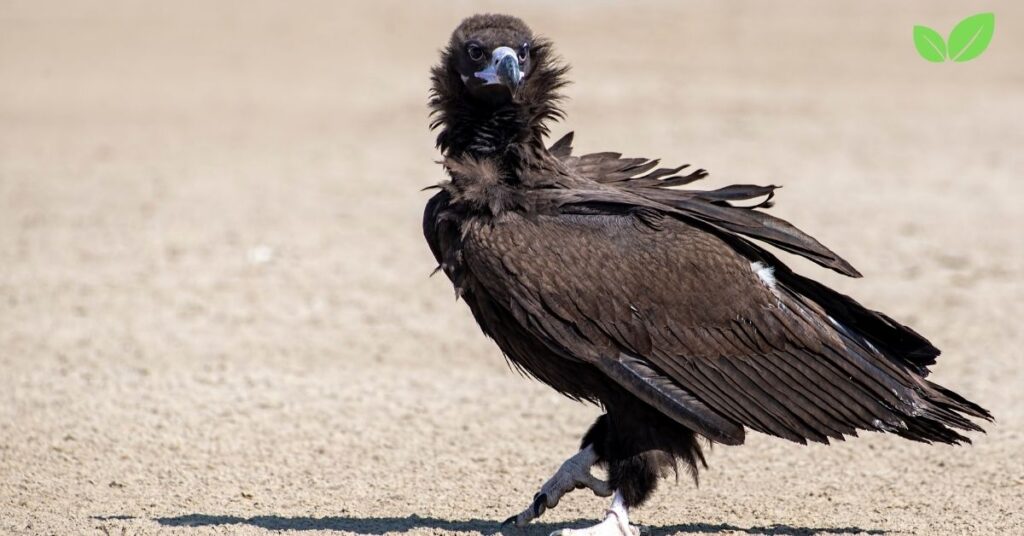
Habitat Loss and Degradation
One of the most significant threats to vultures is habitat loss and degradation. As human populations expand and agricultural and industrial development increases, many of the natural habitats that monk vultures rely on for nesting and foraging are being destroyed or fragmented. Deforestation, in particular, poses a serious threat in forested regions where vultures build their nests.
In addition to direct habitat loss, human disturbance in vulture nesting areas can lead to reduced reproductive success. Monk vultures are highly sensitive to disturbance, and even occasional human presence near a nesting site can cause the birds to abandon their nests or reduce their breeding efforts.
Poisoning and Human Conflict
Poisoning is another major threat to monk vultures. In some regions, vultures are accidentally poisoned when they consume carcasses that have been deliberately laced with poison to target predators such as wolves or foxes. These poisoned carcasses can kill not only the targeted predators but also any scavengers that feed on them, including monk vultures.
In addition to deliberate poisoning, monk vultures are also vulnerable to secondary poisoning from agricultural chemicals, such as pesticides and veterinary drugs. One of the most well-known examples of this is the veterinary drug diclofenac, which has caused significant declines in vulture populations in South Asia. When livestock treated with diclofenac die, their carcasses become toxic to vultures that consume them.
Lead Poisoning from Ammunition
Lead poisoning, often resulting from ingestion of lead-based ammunition fragments left in animal carcasses by hunters, is another significant threat to monk vultures. When vultures feed on the remains of game animals, they can ingest small fragments of lead, which accumulate in their bodies over time. Lead poisoning can cause neurological damage, impaired reproduction, and death.
Collision with Wind Turbines and Power Lines
As wind energy infrastructure expands, monk vultures and other large birds of prey are increasingly at risk of collision with wind turbines. The wide-ranging foraging behavior of vultures, combined with their large wingspans, makes them particularly vulnerable to such collisions, which can result in injury or death.
Power lines also pose a risk to monk vultures, particularly in regions where they use tall trees or cliffs for nesting. Birds can collide with the lines or be electrocuted when they land on power poles. Efforts to reduce this risk include burying power lines in key vulture habitats and installing bird-safe poles and conductors.
Conservation Efforts and the Future of Monk Vultures
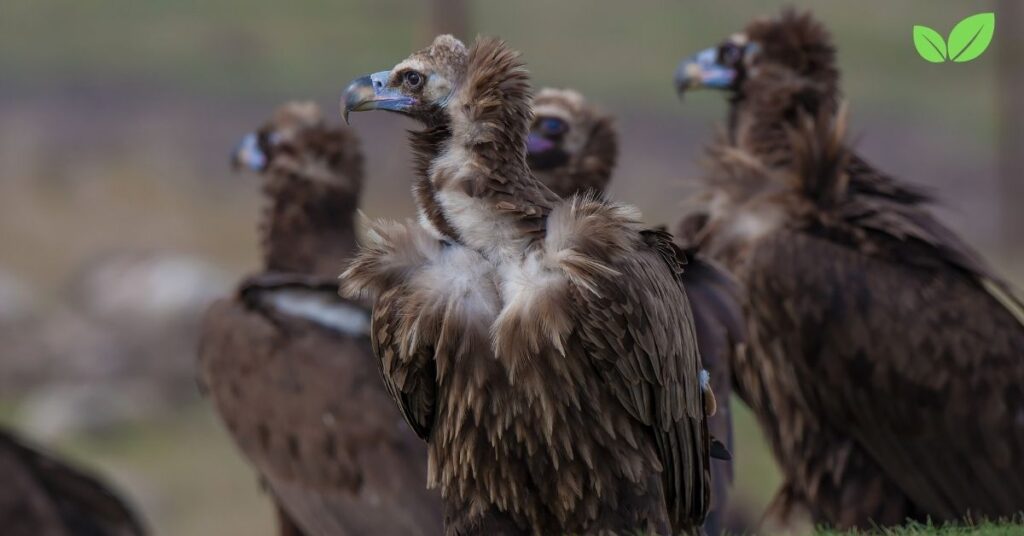
Legal Protections
Monk vultures are protected under various national and international laws, including the Convention on International Trade in Endangered Species of Wild Fauna and Flora (CITES) and the European Union’s Birds Directive. These legal frameworks help to protect monk vultures from illegal hunting, habitat destruction, and trade.
In addition to legal protections, many countries have established national parks, reserves, and protected areas where vultures can live and breed with minimal human disturbance.
Reintroduction Programs
In several countries, vultures have been successfully reintroduced into areas where they were previously extinct or critically endangered. For example, in Spain, extensive reintroduction programs have helped to bolster the population of monk vultures, making it one of the species’ strongholds in Europe.
These programs often involve captive breeding efforts, where vultures are bred in zoos or specialized facilities and then released into the wild. These reintroductions have helped to stabilize or even increase vulture populations in some regions, though long-term success depends on continued protection and habitat restoration.
Habitat Restoration
Habitat restoration is another key component of monk vulture conservation. Efforts to restore forests, grasslands, and other natural habitats that vultures rely on for nesting and foraging are essential for the species’ survival. In some regions, conservationists have also worked to create “vulture restaurants,” where safe, uncontaminated carcasses are provided for vultures to feed on.
These feeding stations help to reduce the risk of poisoning and ensure that vultures have access to a reliable food source, particularly in areas where human activity has reduced the availability of natural carrion.
Conclusion: The Environmental Niche of the Monk Vulture
The monk vulture plays an indispensable role in the ecosystems it inhabits. As a scavenger, it helps to prevent the spread of disease by consuming carrion, contributes to nutrient cycling, and maintains the health of ecosystems. Its reliance on large, undisturbed habitats and its sensitivity to human activities make it a species that requires careful management and protection.
With ongoing conservation efforts, legal protections, and habitat restoration initiatives, there is hope that monk vulture populations can recover and thrive in their natural environments. However, continued vigilance is required to ensure that these majestic birds are safeguarded from the many threats they face, from habitat loss to poisoning and human disturbance.
By understanding the environmental niche of the vulture and its critical role in the natural world, we can work towards preserving not only the species but also the broader ecosystems that depend on these remarkable scavengers.
Read More: The Environmental Niche of Kite Animals: A Deep Dive into Their Ecology, Habitat, and Behavior

